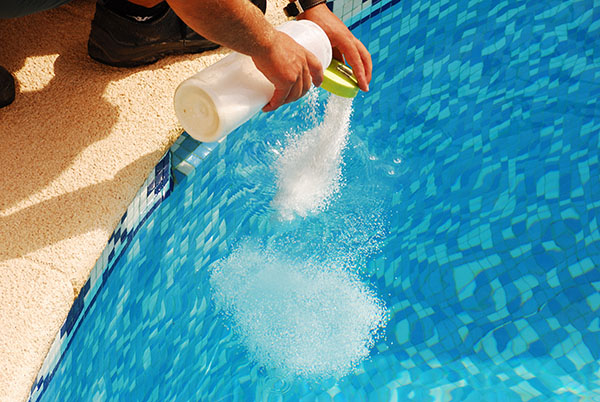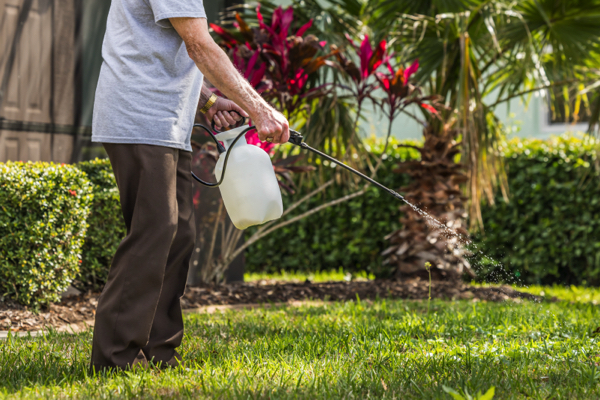Your HVAC system can harbor mold: How to fight back
06/19/2025 / By Lance D Johnson

As summer temperatures rise, millions of Americans rely on air conditioning to stay cool — but few realize the hidden danger festering inside their units. Mold, a toxic invader thriving in damp, dark environments, silently infiltrates HVAC systems, spreading harmful spores that trigger allergies, respiratory distress, and even long-term neurological damage. With studies suggesting 70-80% of U.S. homes harbor mold, and manufacturers like Midea recalling 1.7 million mold-prone AC units, the crisis can no longer be ignored.
But there is hope. Beyond conventional cleaning methods, nature’s own defenses — essential oils with potent antifungal and antibacterial properties — can neutralize mold at its source. From tea tree oil’s microbial-killing power to clove’s mold-suppressing strength, these plant-based solutions offer a safer, chemical-free way to reclaim clean air.
Key points:
- Mold thrives in AC units due to moisture, dust, and poor ventilation, creating a toxic breeding ground.
- Exposure causes symptoms ranging from headaches and rashes to severe respiratory issues—some liken it to “worse than cancer.”
- Standard cleaning methods often fail, but 15 essential oils (listed below) can combat mold naturally.
- Prevention is critical: UV lights, HEPA filters, and routine maintenance can stop mold before it spreads.
- Indoor plants can also purify the air in the home.
The invisible enemy: How mold hijacks your air conditioner
Mold spores are opportunistic, exploiting the perfect storm of moisture, warmth, and organic debris inside AC systems. When condensation pools in drip pans or clings to cooling coils, it creates a haven for fungi like Aspergillus and Stachybotrys (black mold). Jordan Peccia, a Yale environmental engineer, warns that humid regions like the Eastern U.S. face the highest risk, as stagnant water accelerates microbial growth.
Unlike visible infestations, hidden mold is the deadliest. Musty odors, sudden allergy flare-ups, or fatigue that lifts when you leave home are red flags. “I’d rather take on breast cancer again than what I went through with mold,” shared a survivor on the Health Ranger Report, highlighting mold’s neurotoxic effects.
Fighting back: 15 essential oils to purify your air
Conventional cleaners like bleach often fail to penetrate deep into ducts and may release harmful fumes. Instead, these antibacterial, antifungal essential oils can be diluted in water and sprayed into AC vents or diffused nearby:
1. Tea tree oil – Disrupts mold cell membranes
2. Clove oil – Contains eugenol, a potent antifungal
3. Cinnamon oil – Kills airborne spores
4. Oregano oil – Carvacrol fights stubborn mold
5. Thyme oil – Thymol eradicates microbial colonies
6. Lavender oil – Soothes lungs while inhibiting mold
7. Eucalyptus oil – Clears respiratory pathways
8. Grapefruit seed extract – Non-toxic biocide
9. Rosemary oil – Prevents spore regrowth
10. Lemongrass oil – Destroys mold at the source
11. Peppermint oil – Freshens air while killing fungi
12. Citronella oil – Repels mold and insects
13. Neem oil – Ayurvedic mold inhibitor
14. Frankincense oil – Boosts immune response
15. Pine oil – Cleans coils and ducts
Pro tip: Mix 10–15 drops with distilled water in a spray bottle and mist near AC intakes weekly. For severe cases, add oils to a UV light-equipped air purifier to amplify their effects.
Beyond oils: How to safeguard your home
While essential oils are powerful, long-term prevention requires systemic changes:
- Upgrade filters: HEPA filters trap spores; replace every 60 days.
- Install UV-C lights: These disrupt mold DNA, halting reproduction.
- Control humidity: Keep levels below 50% with dehumidifiers.
- Insulate ducts: Prevents condensation in attics or crawl spaces.
As mold and airborne toxins continue to threaten indoor air quality, investing in a high-quality air purifier is no longer optional — it’s a necessity. Modern homes, sealed tight for energy efficiency, trap pollutants inside, creating an environment where indoor air can be 10 to 100 times more toxic than outdoor air. While essential oils and natural remedies help, they cannot fully eliminate microscopic mold spores, volatile organic compounds (VOCs), or carcinogenic dioxins.
Why you need an air purifier
Neutralizes mold spores – Mold reproduces via airborne spores that evade standard cleaning. Advanced air purifiers with photocatalytic oxidation (PCO) technology break down mold at a molecular level, preventing regrowth.
Eliminates VOCs – Furniture, paints, and cleaning products release formaldehyde and benzene. Purifiers with activated carbon filters absorb these chemicals before they damage your lungs.
Stops pathogens – Viruses, bacteria, and allergens linger in stagnant air. HEPA + UV-C systems capture and destroy 99.97% of particles as small as 0.3 microns.
Reduces odors – Unlike synthetic air fresheners that mask smells with chemicals, purifiers like the Triad Air Pro neutralize odors from pets, smoke, and mildew.
Protects long-term health – Chronic exposure to mold and toxins is linked to asthma, neurological disorders, and even cancer. Proactive purification prevents irreversible damage.
Choosing the right purifier
- For mold & allergens: Look for HEPA + PCO + UV-C (e.g., Health Ranger Store’s Triad Air Pro).
- For chemicals & smokes: Prioritize activated carbon filters (e.g., Austin Air HealthMate).
- For large spaces: Ensure a high Clean Air Delivery Rate (CADR) to circulate air efficiently.
10 Air-purifying plants that filter toxins naturally
While technology offers robust solutions, houseplants provide a natural (albeit supplemental) way to improve air quality. NASA’s Clean Air Study identified several plants that absorb toxins like benzene, formaldehyde, and trichloroethylene. Here are the top 10:
- Snake Plant (Sansevieria) – Thrives in low light, removes formaldehyde, and emits oxygen at night.
- Spider Plant (Chlorophytum comosum) – Neutralizes carbon monoxide and xylene; safe for pets.
- Peace Lily (Spathiphyllum) – Absorbs mold spores and VOCs; blooms in shade.
- Bamboo Palm (Chamaedorea seifrizii) – Filters benzene and trichloroethylene; adds tropical humidity.
- Aloe Vera – Clears formaldehyde while healing burns. Place near sunny windows.
- Boston Fern – A powerhouse for removing airborne mold and formaldehyde.
- Rubber Plant (Ficus elastica) – Breathes in toxins while thriving in dim light.
- English Ivy (Hedera helix) – Reduces airborne mold by 94% in 12 hours.
- Areca Palm (Dypsis lutescens) – One of the best for general air detoxification.
- Gerbera Daisy – Removes benzene (common in inks and dyes) and boosts mood with bright blooms.
For optimal air cleaning, place plants in bedrooms, living rooms, and near HVAC vents. However, remember — plants alone cannot replace a high-efficiency air purifier for pathogens, dioxins, or severe mold infestations. These issues require a professional cleaning of the AC system.
Sources include:
Submit a correction >>
Tagged Under:
This article may contain statements that reflect the opinion of the author



















